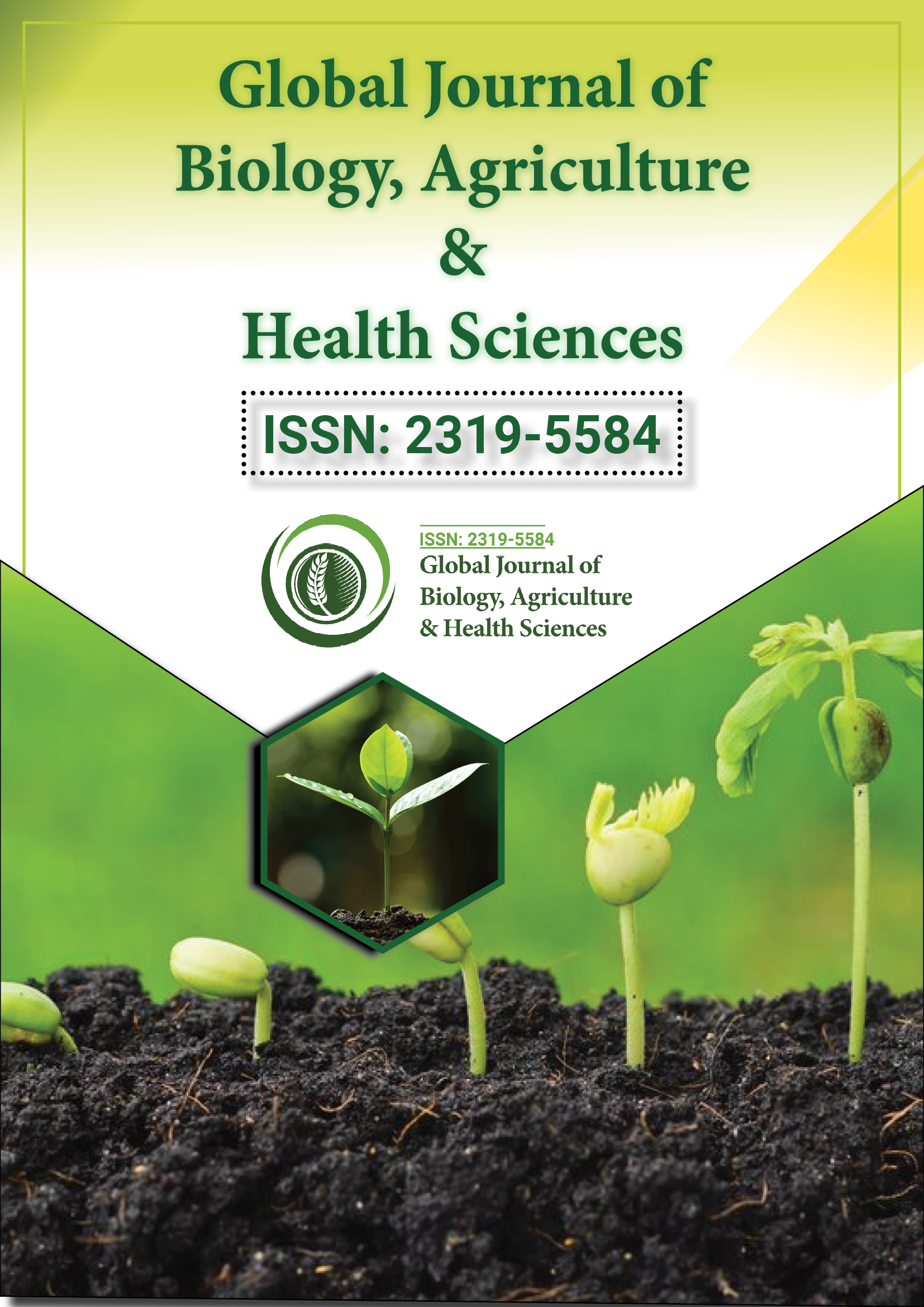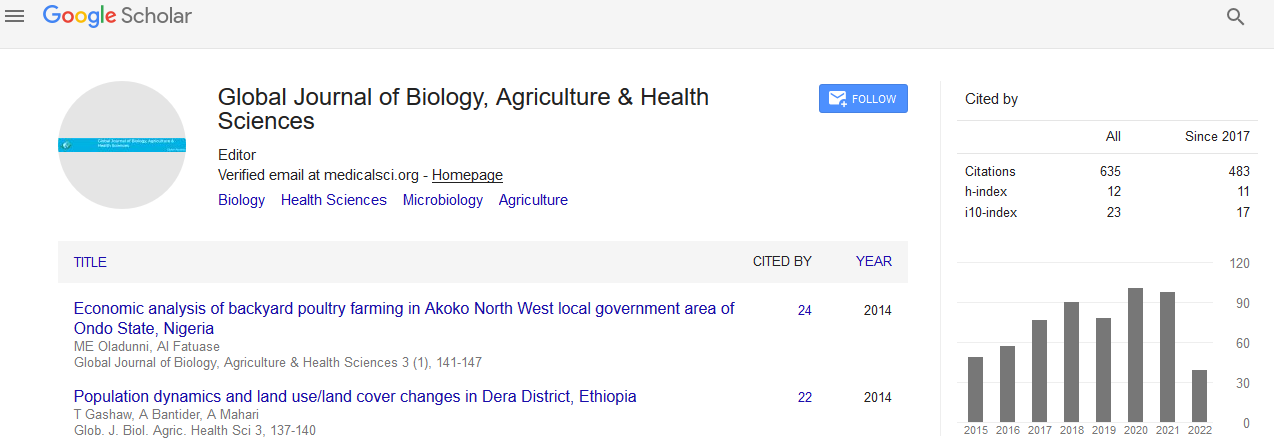Indexed In
- Euro Pub
- Google Scholar
Useful Links
Share This Page
Journal Flyer

Open Access Journals
- Agri and Aquaculture
- Biochemistry
- Bioinformatics & Systems Biology
- Business & Management
- Chemistry
- Clinical Sciences
- Engineering
- Food & Nutrition
- General Science
- Genetics & Molecular Biology
- Immunology & Microbiology
- Medical Sciences
- Neuroscience & Psychology
- Nursing & Health Care
- Pharmaceutical Sciences
Abstract
A Study Into Microbial Quality Of Ready To Eat Foods Sold In The Sunyani Municipality of Ghana
Addo Henry Ofosu,Dzigbede Bridget Adzoas,Agidi Joy Eva Love,Adjei Jennifer,Koranteng Augustine
For this study the microbial quality of ready to eat foods sold in the Sunyani Municipality of Ghana was assessed. It was done through experiments of culturing selected food samples on various media. Laboratory analysis was done for the enumeration, isolation and identification of bacteria. It was also descriptive, focusing on the factors that are associated with food hygienic practices. Simple random sampling technique was used to select 120 respondents. A total of 10 different food samples were examined for aerobic bacteria (total counts), enterobacteriaceae and fungi presence. Mesophilic bacteria were identified in all food samples (100%); and fungi, and enterobacteriaceae were found in 1 (11.1%) and 8 (88.7%), respectively. The microbial quality of most foods was within acceptable limits, that is <5.0 log10 cfu/g for total counts, <3.0 log10 cfu/g for Enterobacteriaceae. In the total counts, only salad, macaroni and “waakye” exceeded their acceptable limits, 5.34 log10cfu/g, 5.54 log10cfu/g, 5.4 log10cfu/g respectively. Common sources of direct or cross contaminations include: mode of handling the food, items in which the food is served for final consumption, mode of conveying the food to the vending point among others. Lack of knowledge of diseases like diarrhoea and cold (Catarrh) is as much one of the factors possible for the introduction of harmful microbes into the ready to eat foods. The occurrence of indicator microorganisms in most of the foods indicated a need for vendors to be educated on general sanitary conditions on improving the environment. Vendors should therefore receive education on food hygiene.
Published Date: 2014-10-05;

